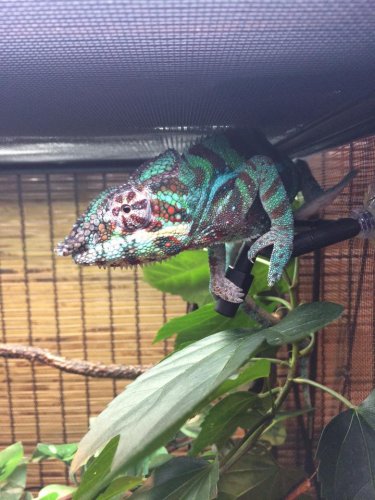dacrazycanadian
Established Member
Hi there everyone! A friend and I are currently breeding our Ambanja's and will have babies on the way in the next few months hopefully! (Attached picture of my sire, Sintel)
I wanted to ask everyone, in their experience, what they think are good tips for breeding chameleons, specifically panthers.
Tips on anything (egg incubation, when to separate babies, how big of cage to house them in, not breaking the bank on supplies, etc.)
*NOTE* Pictures are highly encouraged
I wanted to ask everyone, in their experience, what they think are good tips for breeding chameleons, specifically panthers.
Tips on anything (egg incubation, when to separate babies, how big of cage to house them in, not breaking the bank on supplies, etc.)
*NOTE* Pictures are highly encouraged





